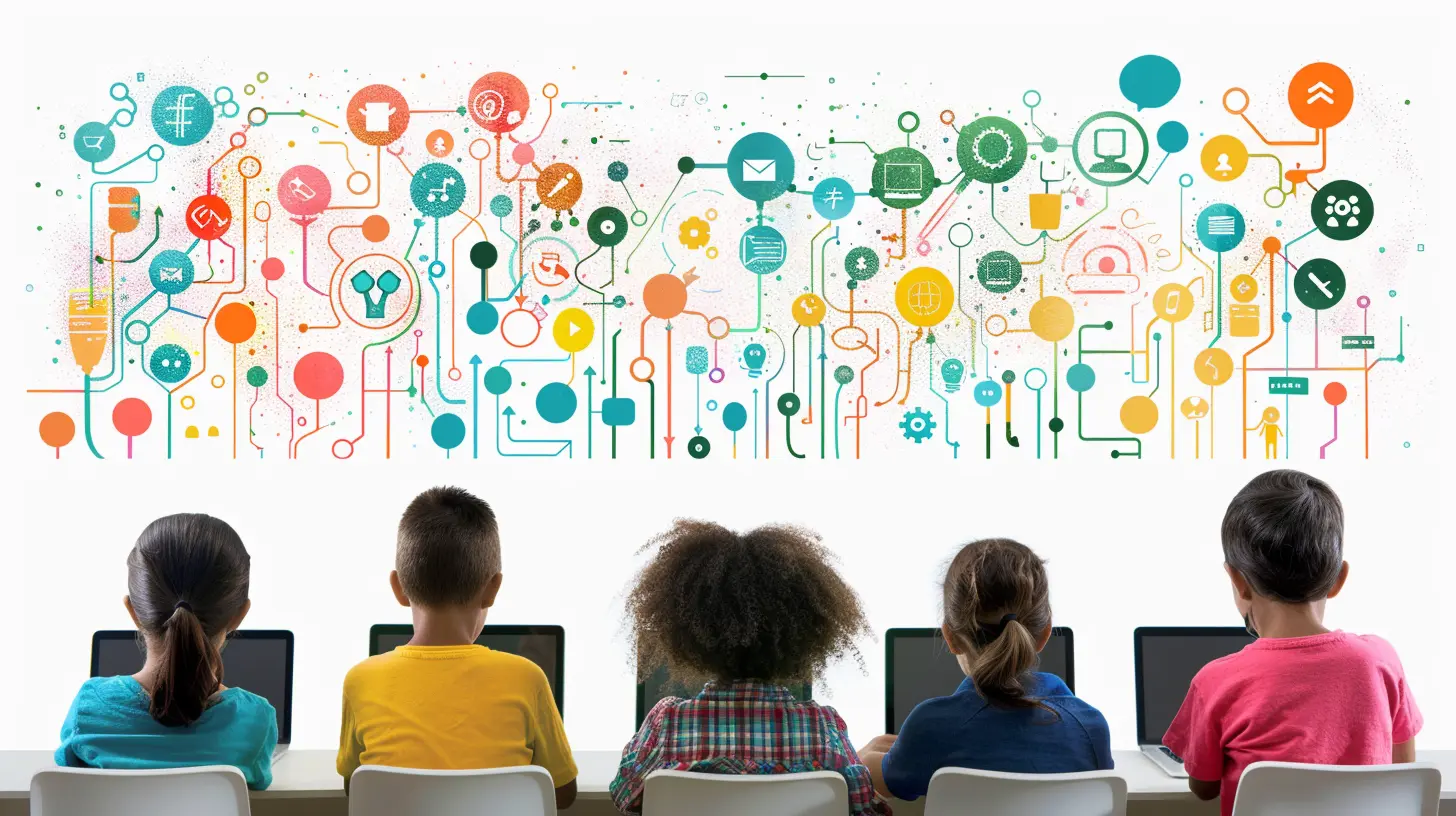Teaching Digital Citizenship: Why It Matters
2 June 2025
The digital world is no longer a separate entity from real life—it is real life. From social media interactions to online learning, students today navigate a virtual landscape that can be as complex and unpredictable as the world outside their screens. But are they equipped to do so responsibly? This is where digital citizenship comes into play.
Teaching digital citizenship is no longer optional; it’s essential. Just as we teach kids how to behave in society, we need to teach them how to act responsibly online. But what exactly does digital citizenship entail, and why does it matter so much? Let’s break it down.

What Is Digital Citizenship?
Simply put, digital citizenship refers to the responsible use of technology. It encompasses everything from internet safety to ethical behavior in online spaces. Imagine it as a digital version of being a good neighbor—treating others with respect, following rules, and making thoughtful decisions.Good digital citizens:
- Use the internet safely and responsibly
- Respect others in digital spaces
- Think critically before sharing information
- Protect their privacy and personal data
- Avoid cyberbullying and online harassment
It’s about more than just using technology—it’s about understanding its impact and using it in a way that benefits both individuals and society as a whole.

Why Teaching Digital Citizenship Matters
1. The Internet Is a Big Part of Everyday Life
From school assignments to social networking, young people spend a significant portion of their lives online. According to studies, teenagers in the U.S. spend an average of 7+ hours per day on screens outside of schoolwork. That’s a lot of time in digital spaces! If they’re not taught how to navigate these spaces responsibly, they can easily fall into risky or harmful behaviors.2. Preventing Cyberbullying and Online Harassment
The internet can be a wonderful place, but it also has its darker sides. Cyberbullying—harassment or bullying that happens online—is a major issue among young people. Unlike traditional bullying, cyberbullying follows victims everywhere, even into their homes. Teaching digital citizenship helps students understand the consequences of their actions online and encourages empathy and kindness in digital interactions.3. Encouraging Critical Thinking and Media Literacy
Fake news, misinformation, and scams are rampant on the internet. Without proper guidance, kids and teenagers may struggle to differentiate between credible sources and deceptive information.Teaching digital citizenship includes media literacy—the ability to critically evaluate online content. Students learn to:
- Question the reliability of sources
- Identify bias in media
- Recognize clickbait and misleading headlines
- Spot online scams and phishing attempts
By fostering critical thinking skills, we equip young people to make informed decisions and avoid being manipulated by misinformation.
4. Protecting Privacy and Personal Data
Many students unwittingly share too much personal information online, making themselves vulnerable to identity theft, hacking, and other risks. Digital citizenship education stresses the importance of:- Strong passwords and secure accounts
- The risks of oversharing personal information
- Understanding privacy settings on social media
- Guarding against online predators
By teaching students to protect their digital footprint, we help them stay safe in an increasingly connected world.
5. Fostering Responsible Social Media Use
Social media is a powerful tool. It can help students connect, learn, and express themselves. However, irresponsible use can lead to serious consequences—both personal and professional.For example, a thoughtless post made in high school can resurface years later, affecting college admissions or job opportunities. Digital citizenship encourages students to think before they post:
- Would I be okay with my teacher, parent, or future employer seeing this?
- Does this post contribute positively to my online presence?
- Could this harm someone else?
These questions help young people develop a healthy, responsible relationship with social media.
6. Understanding Digital Footprints and Online Reputation
Every action online leaves a digital footprint—a trail of data that can be traced back to the user. What happens on the internet stays on the internet, sometimes forever.Teaching digital citizenship helps students grasp the long-term impact of their online actions. They learn how to:
- Control their digital footprint
- Build a positive online reputation
- Avoid leaving a trail of regrettable posts or comments
A well-managed digital presence can open doors, while a careless one can close them.
7. Preparing for a Digitally-Driven Future
We are living in the digital age, and the future of education, work, and communication is increasingly online. From remote jobs to online degrees, success in the modern world requires strong digital skills.By teaching digital citizenship, we’re not just helping students safely navigate their teenage years—we’re preparing them for a future where digital literacy is a necessary life skill.

How to Teach Digital Citizenship Effectively
So, how do we actually teach digital citizenship? Here are some practical ways:1. Incorporate It Into the Curriculum
Schools can integrate digital citizenship lessons into multiple subjects—English, social studies, and even science. Discussions on online safety, ethics, and media literacy can fit naturally into existing coursework.2. Use Real-Life Scenarios
Students respond best to real-world examples. Discuss actual cases of cyberbullying, data breaches, or online reputation mistakes. Ask students how they would handle these situations.3. Encourage Discussions and Debates
Host classroom discussions on topics like:- Is social media more harmful or beneficial?
- Should online anonymity exist?
- How can we stop the spread of misinformation?
Encouraging open dialogue helps students think critically about digital issues.
4. Promote Digital Kindness
Instead of just teaching what not to do, emphasize positive digital behavior. Encourage students to spread kindness online, support their peers, and report harmful behavior when they see it.5. Teach Online Safety Practices
Make sure students know the basics:- How to create strong passwords
- The importance of two-factor authentication
- How to recognize phishing emails and scams
These small habits can make a huge difference in their online safety.
6. Educate Parents and Guardians
Digital citizenship shouldn’t only be taught in schools—parents should be involved too! Schools can host workshops or provide online resources so that families can reinforce these lessons at home.
Conclusion
Teaching digital citizenship isn’t just about internet safety—it’s about shaping responsible, ethical, and informed individuals in a digital world. In an age where technology is intertwined with daily life, digital citizenship is just as important as traditional citizenship.By instilling good digital habits early on, we can ensure that the next generation uses technology wisely, ethically, and safely. After all, the internet isn’t going anywhere—so let’s make sure our students are ready for it.
all images in this post were generated using AI tools
Category:
Teacher ResourcesAuthor:

Fiona McFarlin
Discussion
rate this article
3 comments
Lulu McQuade
Teaching digital citizenship? Because who doesn’t want to navigate the internet like a toddler?
June 22, 2025 at 3:33 AM

Fiona McFarlin
Teaching digital citizenship equips individuals with essential skills to navigate the internet responsibly and safely, promoting informed and respectful engagement online, far beyond toddler-level navigation.
Weston Stewart
Empowering students with digital citizenship fosters responsible, informed online engagement.
June 11, 2025 at 11:05 AM

Fiona McFarlin
Absolutely! Teaching digital citizenship is crucial for equipping students with the skills they need for responsible online interaction and informed decision-making.
Blaine Ross
In a world where "social media" is just as popular as "social studies," teaching digital citizenship is like equipping our kids with a map in a digital jungle—navigating wisely ensures they don’t end up lost in the meme maze!
June 3, 2025 at 11:04 AM

Fiona McFarlin
Absolutely! Teaching digital citizenship is essential for helping students navigate the complexities of online interactions and making informed choices in a digital landscape.



